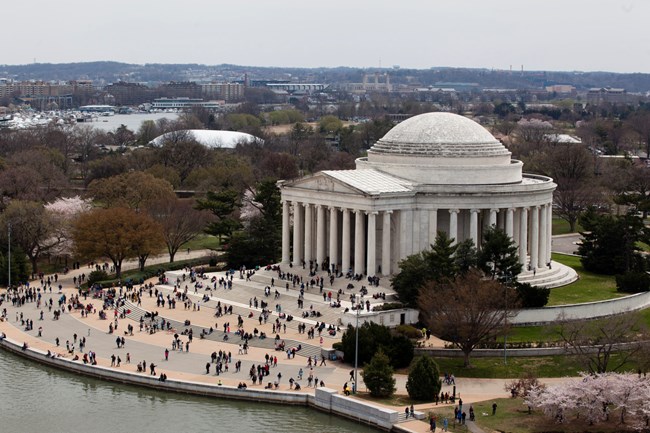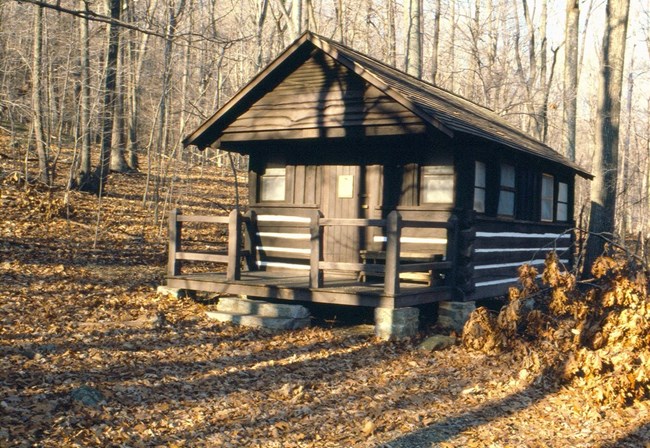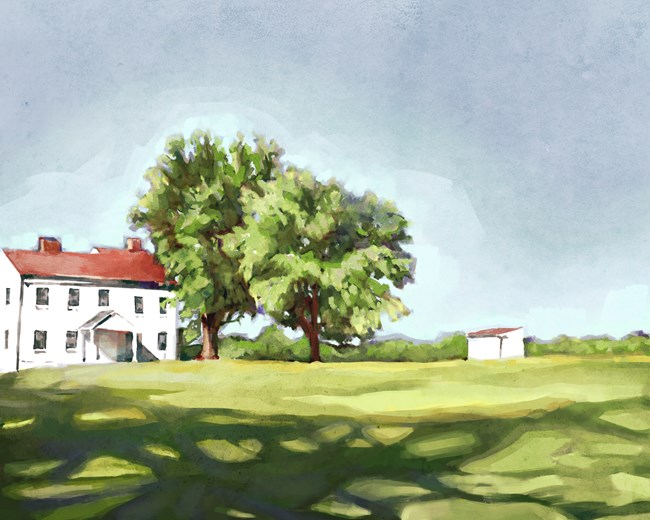Last updated: December 8, 2021
Article
Cultural Resources and Climate Change

NPS Photo / Graphic by 4C
Cultural resources are sites, structures, objects, and even landscapes that show the history of human activity and/or hold significance to a group of people traditionally associated with it. For the National Park Service, these resources play an important role in the protection and interpretation of the nation's heritage, including the many iconic structures in the National Capital Region.
Climate change, however, is making it harder to preserve these cultural resources for future generations. Changing weather patterns, increased pests, wood rot, and pollution all increase deterioration of our cultural and historical resources.
View the Climate Change Connections Photo Booklet for a visual journey of climate in the regional parks. The book tells the current and historical climate change stories of memorials around the National Mall and Memorial Parks. The booklet is divided into four different sections: the Tidal Basin, the Martin Luther King Jr. Memorial, the Franklin Delano Roosevelt Memorial, and the Thomas Jefferson Memorial.
Acid Rain on Memorials
More greenhouse gases in the atmosphere will exacerbate the presence of acid rain and sulfur dioxide gas, which damages the DC area’s many stone memorials.
Rain is the result of water vapor gathering around tiny dust particles called condensation nuclei. These individual droplets then condense to form clouds. Acid rain is formed when the condensation nuclei are created with dust from emissions of sulfur dioxide or nitrogen oxide. More greenhouse gas emissions create water droplets with stronger acid and more sulfur dioxide gas.

NPS / Rachel Hendrix
The Thomas Jefferson memorial has already received restoration work on its columns in 2004. NPS removed black crust on the marble and added structural supports to prevent damaged stone from falling, but the memorial will likely receive further costly restoration work for future damage. Researchers continue to investigate the climate and related causes of the black crust.
Thanks in part to federal regulations that limit the amount of nitrogen and sulfur oxides that industries produce, the acid rain problem in Washington, DC has improved since 1997, but precipitation still remains more acidic than unpolluted rain and poses a threat to cultural resources.
Damage to Historic Buildings
The collective changes wrought by climate change will leave historic buildings more prone to damage. Expected increases in wind, precipitation, humidity, and temperatures stress the foundations and materials of old buildings, leading to splintering, warping, and wood rot. There is also an increased risk of damage from trees falling due to increased storm intensity and rainfall.
That’s why all park historic structures must be regularly monitored to determine any necessary restoration or repairs.

NPS Photo
The cabins are made of American Chestnut lumber which cannot be replaced, so it is vital to protect the material as it exists. Unfortunately, the lumber is experiencing accelerated rot due to higher humidity in the region, and termites, more active in warm weather, will increasingly damage the cabins’ irreplaceable lumber.
The frequency of intense storms is likely to continue to increase over the next several decades and result in erosion that damages the foundations of the Catoctin cabins. Climate change has already resulted in a 71% increase in the frequency of heavy downpours in the Northeast corridor of the USA from 1958-2012.
Changes in the Landscape
Environmental landscapes give visitors valuable views into the history of the area. From the witness trees that were alive during the Battle of Monocacy to the rolling hills soldiers used for cover at the Battle of Antietam, these cultural resources warrant unique partnerships with local farmers to preserve them as they were during their historical moments.

NPS / 4C park illustration
While agriculture remains the hallmark of these battlefields, the battle is now with climate change. Irregular precipitation patterns will mean that parks will be too wet some years and in a drought a few years later. Although some crops are adaptable to these erratic climate variations, the increase in drastic precipitation or temperature changes will affect the crops long term.
Invasive species and bugs are also predicted to increase their range with climate change, impacting plant productivity. Even invasive plants may try to take over as climate change threatens the survival of native species. To mitigate these issues, park staff is working on using more cover crops to make the soil healthier and more resilient as well as implementing an invasive species management plan to address the issues that invasive species pose at each site.

